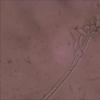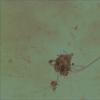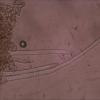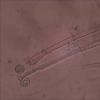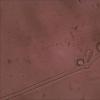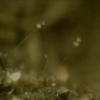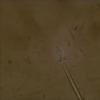
31-10-2025 09:19
 Lothar Krieglsteiner
Lothar Krieglsteiner
Can somebody provide me with a file of:Rogerson CT

09-08-2025 13:13
 Maria Plekkenpol
Maria Plekkenpol
Hello,Yesterday I found these on burnt soil. Apoth

28-10-2025 19:33
 Nicolas Suberbielle
Nicolas Suberbielle
Bonjour à tous,Je voudrais votre avis sur cette r

25-11-2016 13:54
 Stephen Martin Mifsud
Stephen Martin Mifsud
Hi, I found numerous seeds of Washingtonia robusta

28-10-2025 22:22
 Bernard Declercq
Bernard Declercq
Hello.I'm searching for the following paper:Punith

28-10-2025 15:37
Carl FarmerI'd be grateful for any suggestions for this strik

28-10-2025 11:29
 Tanja Böhning
Tanja Böhning
Hello, I found this very small (ca 0,5mm) yellow

Found on cow dung.
It looks as if it developes two kinds op conidia's circular and ovel shaped on two places of the stem.
Circular conidia's are covered with wrats and the oval conidia's are not.
Stem: hyaline; 420-450x3-3.5um; septated, with two conidia origins; distance between origins 13-14 um; stem can be branched.
Oval conidia's: 7-8x2.5-3.5 um
Circular conidia's: 6-7 um in diameter.

the 'hyphomycete' with the elongate conidia looks very like Gonatobotrys simplex (anamorphic Melanospora damnosa (Sacc.) Lindau), a species which is often found associated with other fungi. Your photo's show these conidia both on the apical and the intercalary swellings.
The globose conidia I don't know about - are you absolutely sure only one fungus species is involved here? Might these globose conidia be "strays".
cordialement
Chris

Hello Chris,
You probably may be right that we do have two different species, one with elongated codidia's and one with globose conidia's.
The stem with elongated conidia's does not have an intercalary swelling underneath the apical one, and the is branched.
The stem with globose conidia's is not branched, but the photo's also show elongated originating from the intercalary swelling.
On the other hand the last photo gives the impression that the elongated conidia's are attached to the bulbous thickening of the stem.
The photo of the species on dung, although not good in focus, clearly shows globose conidia's on top of the stem and a bunch of conidia's beneath the top not positively identified as being elongated or globose.
I will have a look for more species hopefully solving the identification problem.
Joop

Chris


